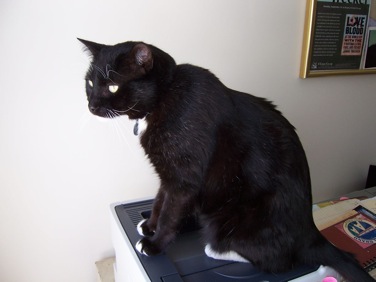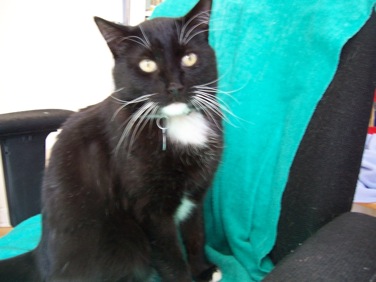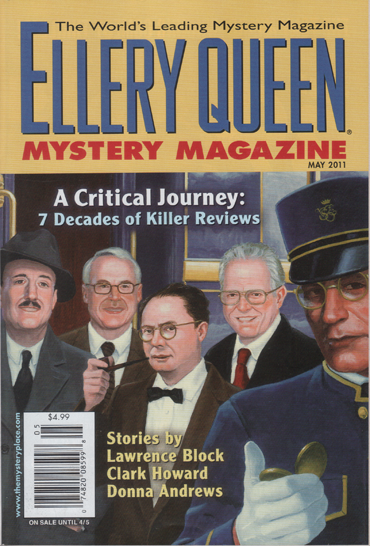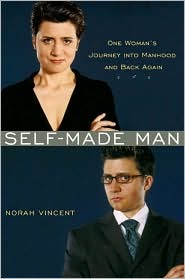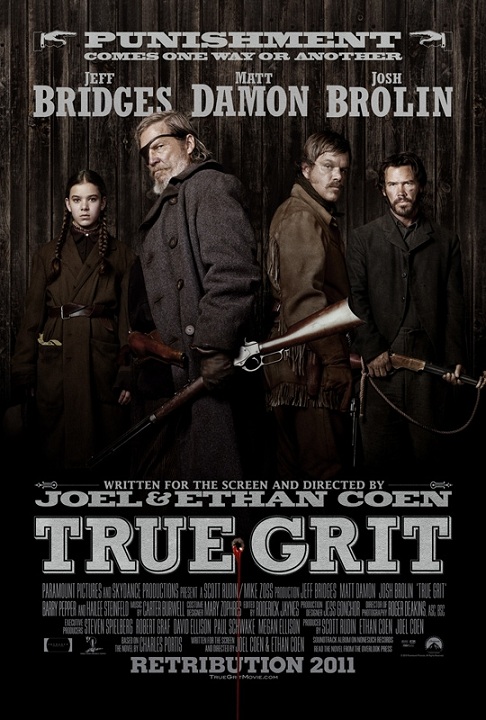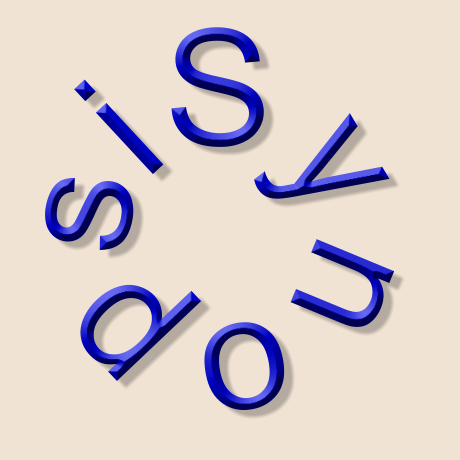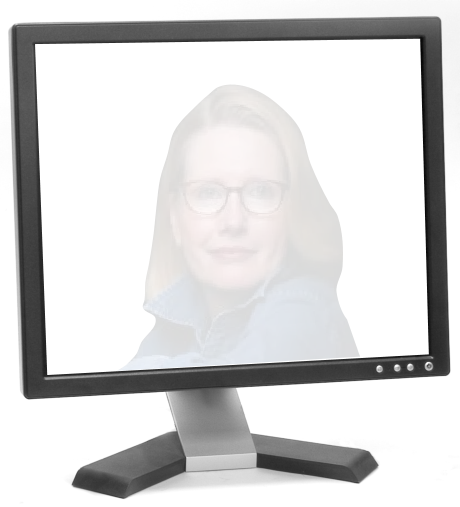Monday, February 28: Spirit of the Law
CATS AND COMPOSITION
by Janice Law
Is it just by chance that writers are so often photographed with cats? From Colette to Hemingway to yours truly, writers pose with their favorite felines. Dogs are lovely, but lets face it, a good dog lives on a much higher ethical plane than most of us. Loyal, kindly, protective, and brave, you have to be at the top of your game to live with dogs. The canine tribe is nice for after hours and doubtless fine for non-fiction writers, those philosophical folks out on the scent of truth and beauty, but we mendacious writers of fiction naturally prefer the cat—at least around the worksite.
Which, and not just by coincidence, they love, being curiously fond of the tools and circumstances of our trade: A warm lap, such as is provided by the writer at her desk. The assorted pens and pencils of the old days, so suitable for tipping off tables and rolling across floors, or in the case of quills, for shredding right down to the rib of the feather.
Doubtless, even the typewriter’s keys held a certain interest, but the composition cat has really come into its own with the computer age, or, more precisely from the cat’s point of view, the printer age, for they like nothing better than to drape themselves over a big one. A writer’s workhorse computer fits the bill nicely. Warm, elevated, and, in the case of mine, commanding the window, the printer is just nicely cat-sized.
Of course, the computer has its own attractions. Treading on the smooth keyboard produces an almost certain response from the writer, while the mouse with its attendant cable is a nice winter substitute for the real thing. But these are just the mechanical attractions. The cat’s affinity with writers, or rather now, the writer’s affinity for cats, goes much further.
Sly, shy, predatory, and curious, the cat is one of nature’s observers. They manage the trick of being at once lazy and alert, sleeping away the day until a sudden unexpected motion propels them into action. They wait, they dream, they pounce. What else does a writer do?
Proper writers are watchful and nosy, eager snoops and listeners. The merest gesture, an inclination of the head or a motion of the hand, can produce a revelation, as can a change in intonation or a murmur of assent or protest. Do these moments of insight come every day? Certainly not, and a good deal of the writer’s life is waiting.
This is preferably productive waiting, because the deities that govern the writing life, unlike those that govern cats, like to see busyness and effort. It is waiting nonetheless, until, out of the everyday, there appears a useful image or a turn of phrase on which the writer had better pounce.
For writer’s ideas are often as concrete as the chipmunks, moles and birds that are the focus of our feline companions. The late Paul Scott claimed that the entire Raj Trilogy started with the image of a young woman running under a stormy sky. Few of us can claim quite such pregnant images and even our best ideas rarely stretch to three fat volumes.
But we must seize what we can and hope that whatever it is—a person of distinctive and striking appearance, a particularly pungent turn of phrase, a brief in the newspaper, or a particularly atmospheric place or building—will begin to take on the shape of a story.
And how does this happen except in dreams, asleep or awake? I know that some writers can take an idea, turn it half a dozen ways and come up with a handful of plots before breakfast. They clearly have a different psyche than I do and probably a different totem animal. For me, a good idea is one that sinks down, very far down, leaving me to wait to see if it will re-surface bearing gifts in the form of a story. Like the cat, part of me sleeps.
Then, all going well, maybe days later, maybe weeks later, maybe years later a little immaterial voice, somewhere between the ordinary promptings of consciousness and an auditory hallucination, starts up. It’s always very definite with no confusion between whether this is a mouse or a vole, or in writer’s terms, between first and third person narration.
The voice is confiding and insistent. If in third person it’s expansive and sometimes moralistic. More often it is first person, self-justifying, amusing, frequently dishonest, occasionally outrageous, and it wants attention now. Will it become a story fit to print?
Not yet. Now like the cat, the writer must focus and start the stalk, creeping forward softly, softly, coaxing the voice to tell more, to come closer. Too much pressure and the story never makes a conclusion. Too little attention and it collapses in the dreaded middle. Just the right amount of work and waiting, just the right amount to trust in the dreaming brain, and voila, a beginning, a middle, an ending.
The results may be good, may be bad, more likely somewhere in the middle. But then, I suppose, not all kills are tasty, either, for once in a while, even a clever cat is tempted by a shrew.




















